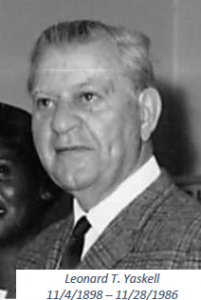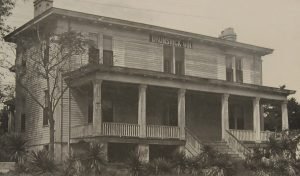Tales of Ships and Shipworms

By Barbara Lemos
On November 14th , Tom Milner presented “The Ships of Southport – Visitors to an Accidental Port” as the Southport Historical Society’s “First Tuesday” talk at Harper Library. Approximately 40 attendees heard romantic myths of tall ships gliding into Southport replaced by cold, hard facts: swampy Southport was simply no place for a port.
When Giovanni da Verrazzano neared the North Carolina coast in 1524 and dubbed our area “Cape Fear,” our humble coast emerged into maritime history. Unfortunately, large ships could not safely navigate our sandbars and shoals. These hazards, formed by sediment carried by the Cape Fear River and its tributaries, shifted in response to currents and storms, making nautical charts nearly useless.
During the golden age of piracy (1690-1725), pirates – including Southport celebrity Stede Bonnet – realized that they could take advantage of the many shipwrecks and groundings, adding another level of fear to the Cape Fear area. Efforts to colonize our area failed as swamp-borne illnesses, venomous snakes, insects, and other perils prevailed over the spirit of adventure. Another organism driving the course of our local history was the shipworm, an aggressive mollusk capable of destroying ship hulls, requiring ship planking to be replaced every eight years.
Naval stores – turpentine, tar, and pitch – could forestall such damage temporarily, and our local long-leaf pine forests could produce these materials in abundance. This discovery finally put Southport on the map as a port as the British Navy obtained 90% of their naval stores from the American colonies, primarily North Carolina.
Cape Fear River maritime trade increased until the Union naval blockade of 1861 halted commerce along the southern US coast. Blockade runners, powered by steam and a 700% profit motive, soon exploited their knowledge of the treacherous Cape Fear waters from the sea to Wilmington to maintain vital trade as other southern ports were blockaded.
Southport will likely never become a major port. Even today, it takes skilled river pilots to help transit the Cape Fear River. Fortunately, we can still watch with awe as immense ships glide past our shores, destined upriver.




